This post may contain affiliate sales links. As an Amazon Associate, I earn from qualifying purchases. Please see my full disclaimer policy for details.
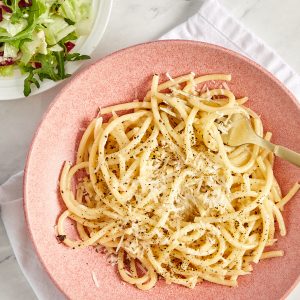
Cacio e Pepe is an elevated, epicure version of adult macaroni and cheese. This ancient Roman dish uses very few ingredients which means you want to use the best available cheese, pasta, and freshly ground pepper. It doesn’t take very long to come together, but there is a knack for getting the proportions just right – but you won’t mind eating your ‘mistakes’ one bit.
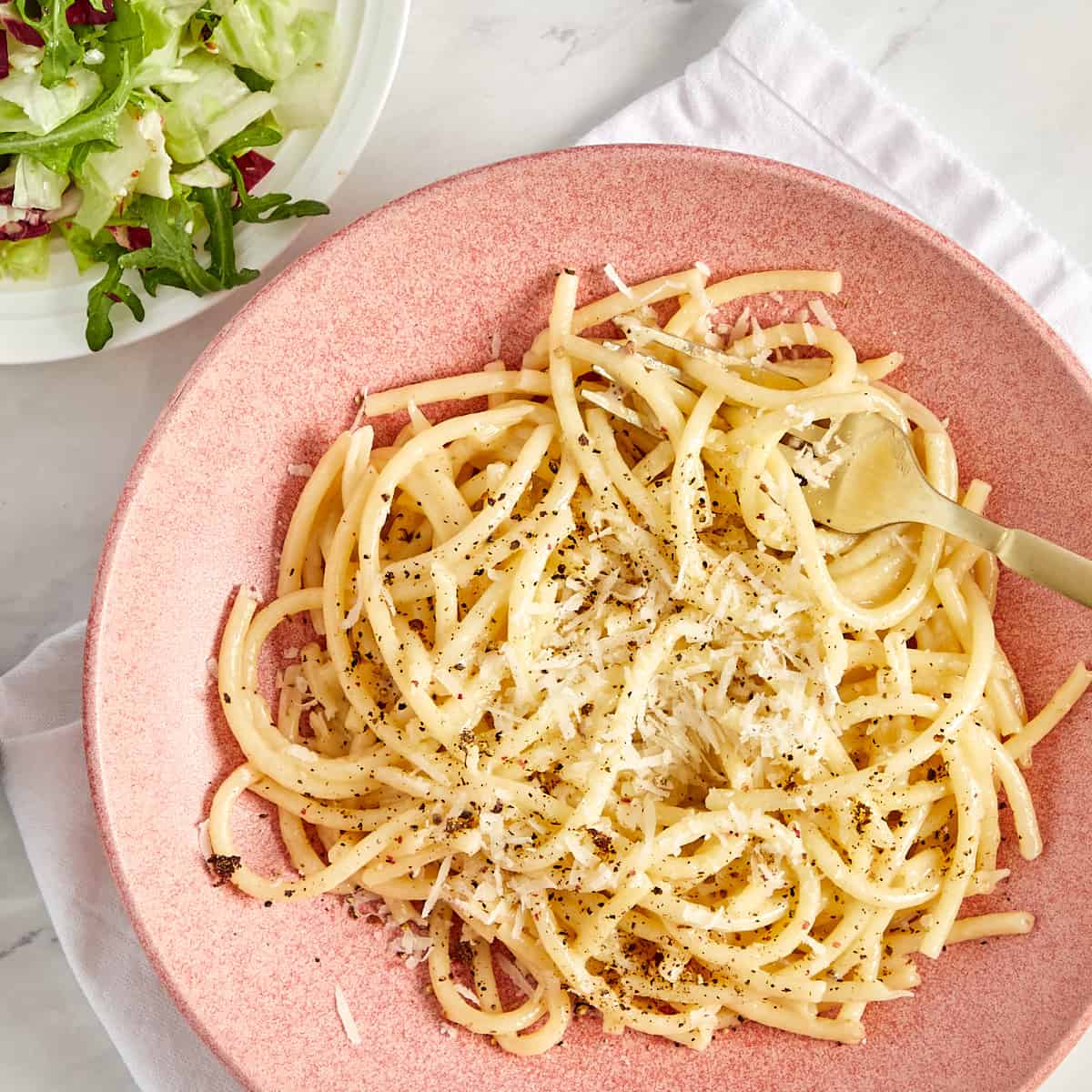
Key Ingredients and Substitutions
Cacio e Pepe is made from 5 ingredients so it’s worth splurging on the best pasta, cheese, and pepper you can afford.
The full ingredient list and measurements are listed in the printable recipe below.
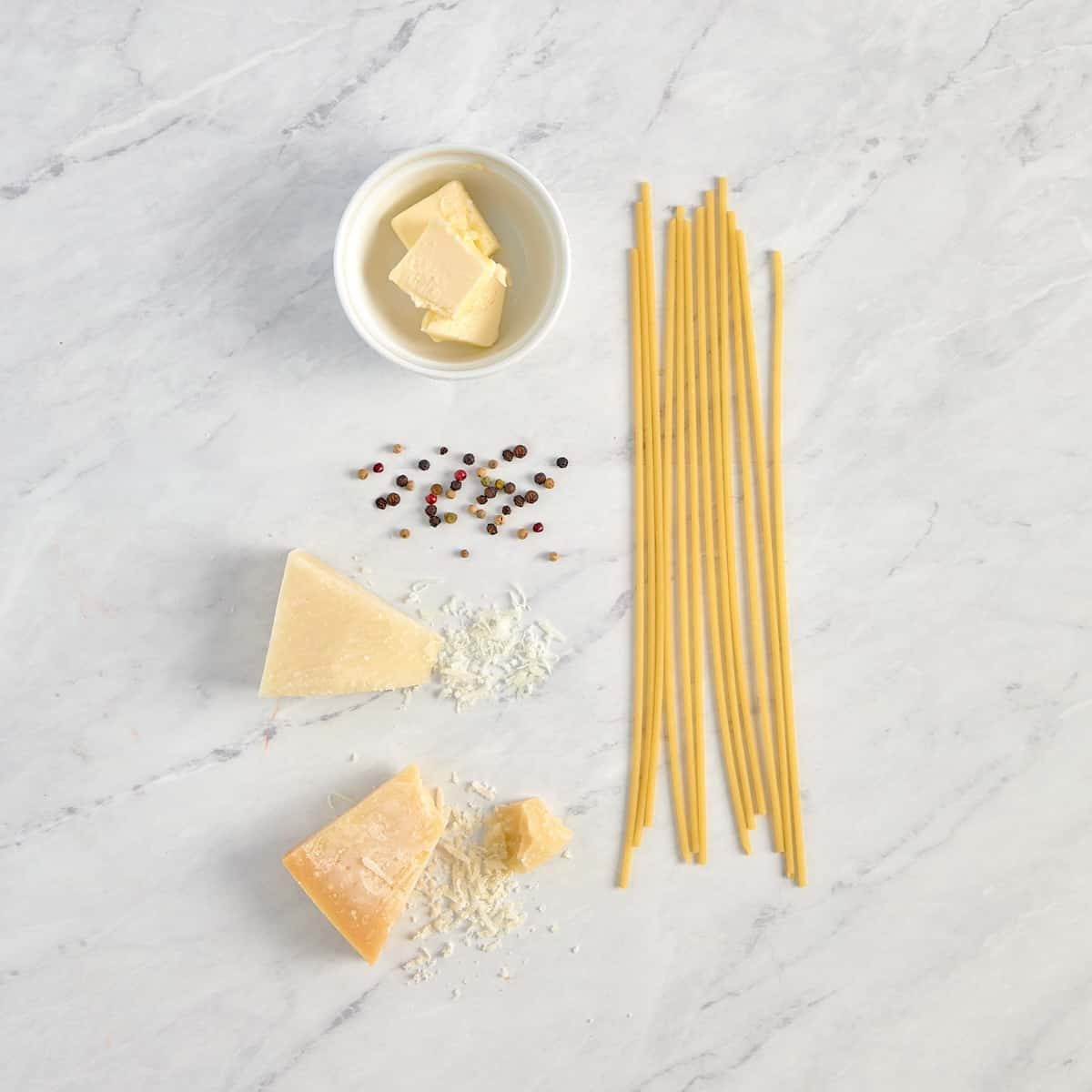
- Pasta: Not all pasta is created equal. Bronze-cut pasta is made with a special die that has more friction, producing a rougher surface on the pasta causing the sauce to cling better. For Cacio e Pepe a long noodle pasta is generally used such as tonnarelli, spaghetti, or bucatini. Tonnarelli is the traditional pasta for Cacio e Pepe but can be difficult to find in U.S. supermarkets. We use bucatini for this recipe since it is slightly thicker than spaghetti and has a hole in the center which means the sauce coats both the inside and outside of the pasta.
- Cheese: Traditional Cacio e Pepe is made with Pecorino Romano, which is made from sheep’s milk, in contrast, Parmigiano Reggiano is made from cow’s milk and has a milder, nutter flavor. For our recipe, we used a combination of both to get a nuttier and less salty flavor. Pre-shredded cheese contains preservatives such as potato starch to prevent clumping so it doesn’t melt as evenly. Whatever combination you decide on it’s best to grate it yourself.
- Black Pepper: The star of Cacio e Pepe is the fresh cracked black pepper so do not use ground pepper. Pepper begins to oxidize as soon as its ground, and oxygen reacts with the flavor compounds causing it to lose some of its flavor. Only freshly cracked black pepper will give you the authentic flavor this dish is named for. We used a mortar and pestle to grind our peppercorns but a peppermill would also work well.
How to Make Cacio e Pepe
Here are the quick step-by-step instructions with visuals; you can find the full instructions with the exact ingredients in the recipe card below.
Pro-tip: Use the side with the finest holes on your cheese grater since larger pieces of cheese are likely to clump.
1. Cook the Pasta: Bring 3 quarts of water to a boil in a large saucepan. Add the pasta and salt and stir occasionally. The pasta needs to be cooked just to al dente, typically 2 minutes less than the recommended cooking time on the package. Reserve 1 cup of the water you cooked the pasta in prior to straining.
2. Toast Black Pepper: Melt 2 tablespoons of butter in a large skillet over medium heat. Add the pepper and cook until the pepper is toasted approximately 1 minute.
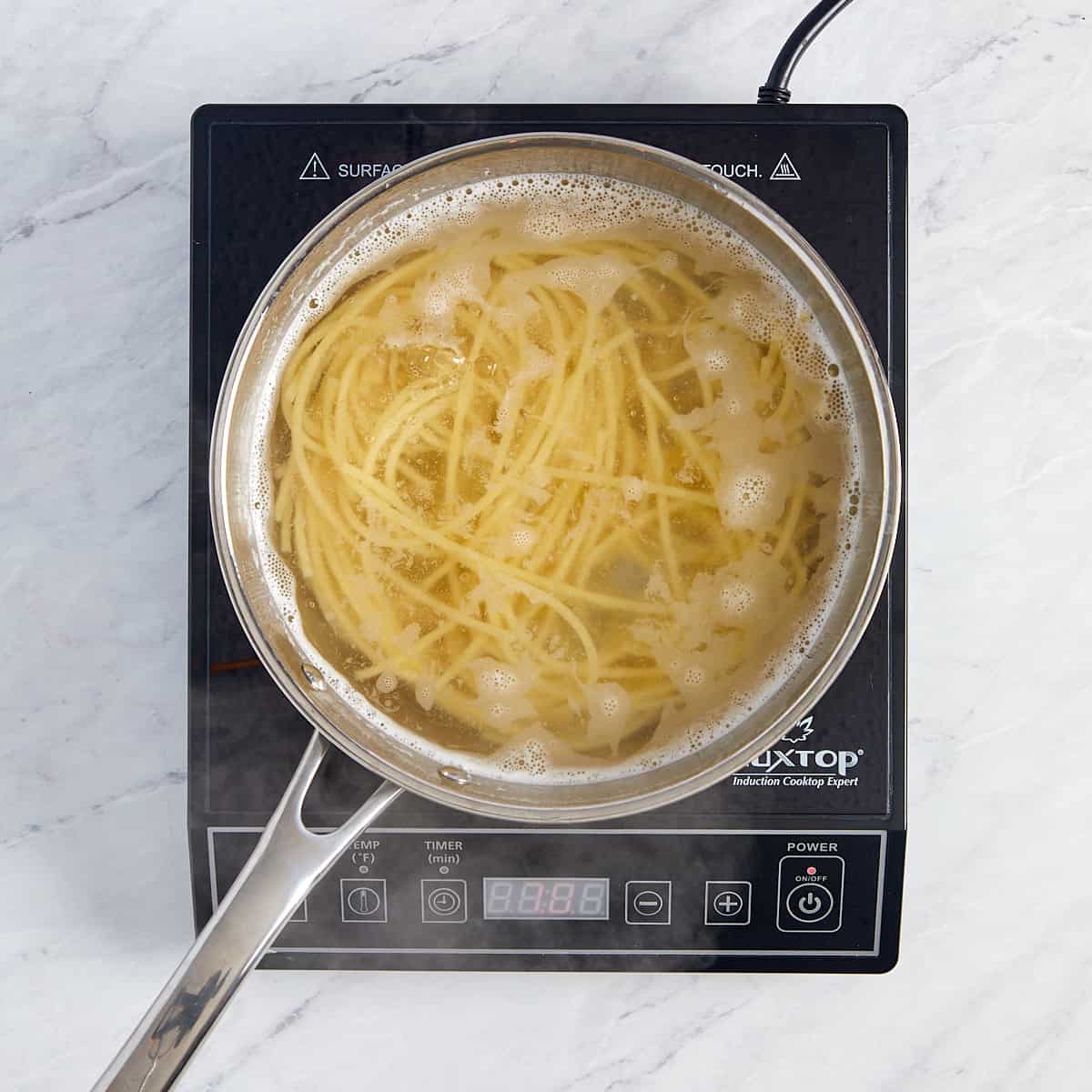
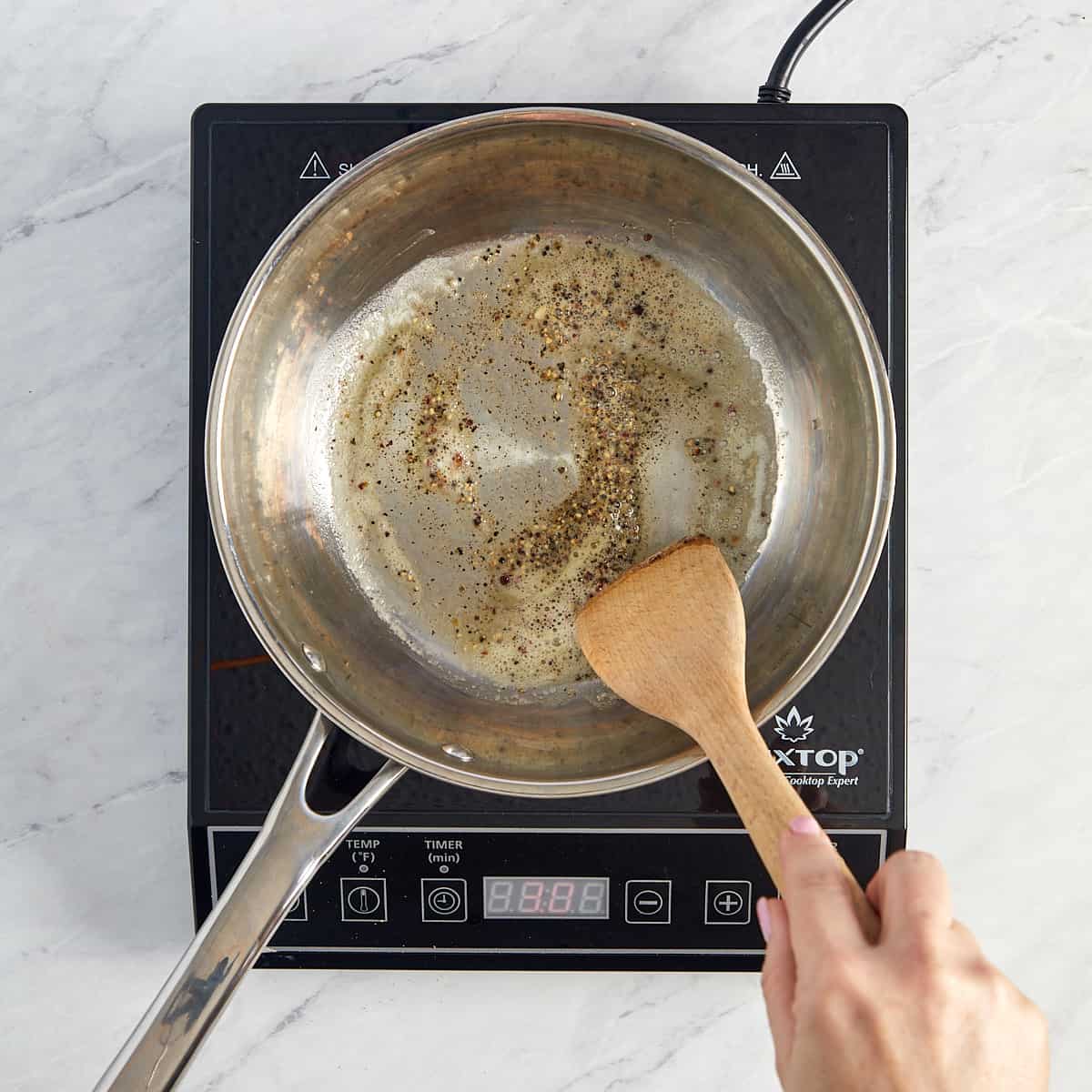
3. Create the Cheese Sauce: Add a 1/2 cup of reserved pasta water to the skillet and bring it to a simmer then add pasta and remaining butter. Reduce heat to low and add Parmigiano Reggiano, stirring and tossing with tongs until melted. Remove skillet from heat and add Pecorino Romano, stirring and tossing until cheese melts and sauce coats the pasta. Pasta should be al dente. Note: Add more of the pasta water if the sauce isn’t silky in the pan and you see a lot of unmelted cheese.
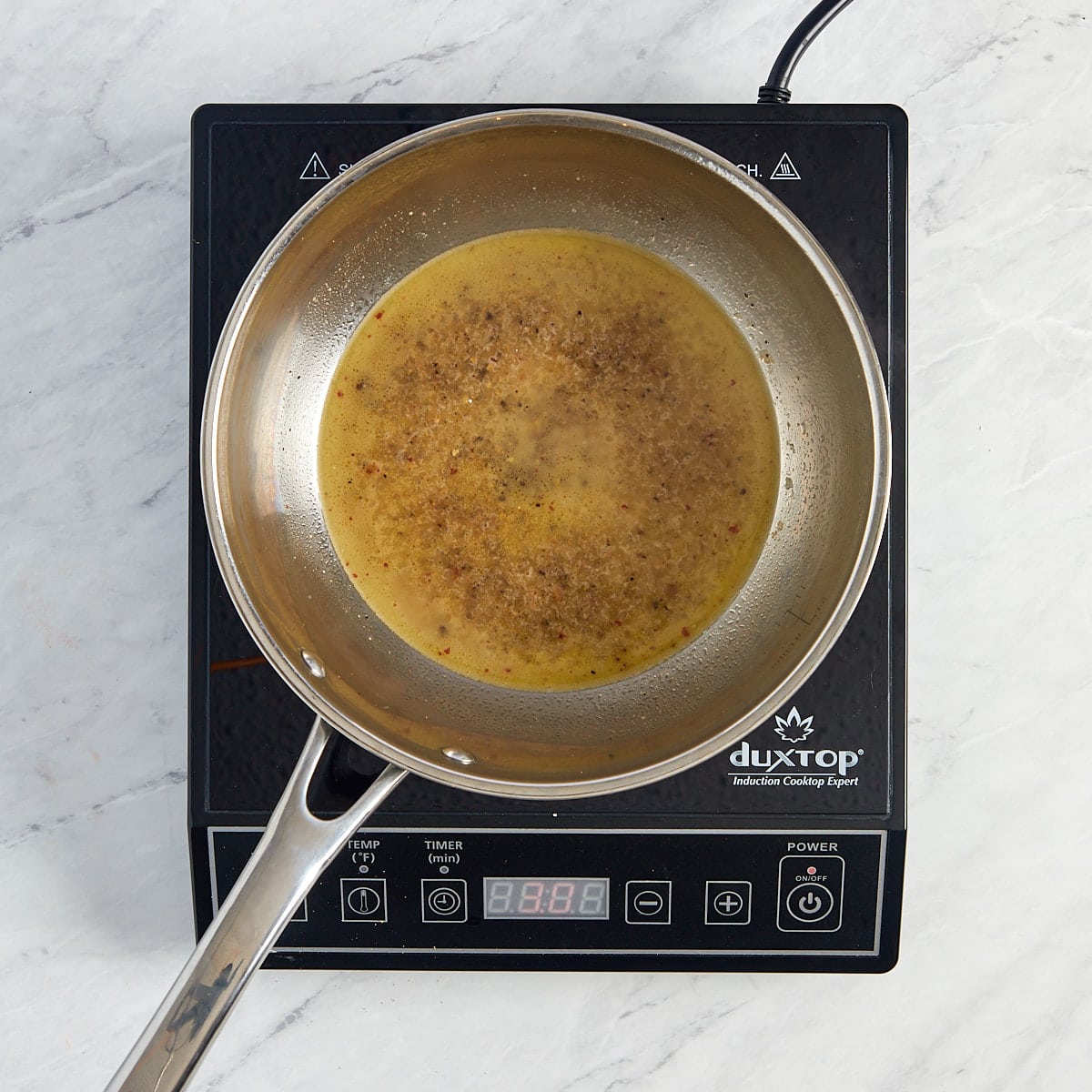
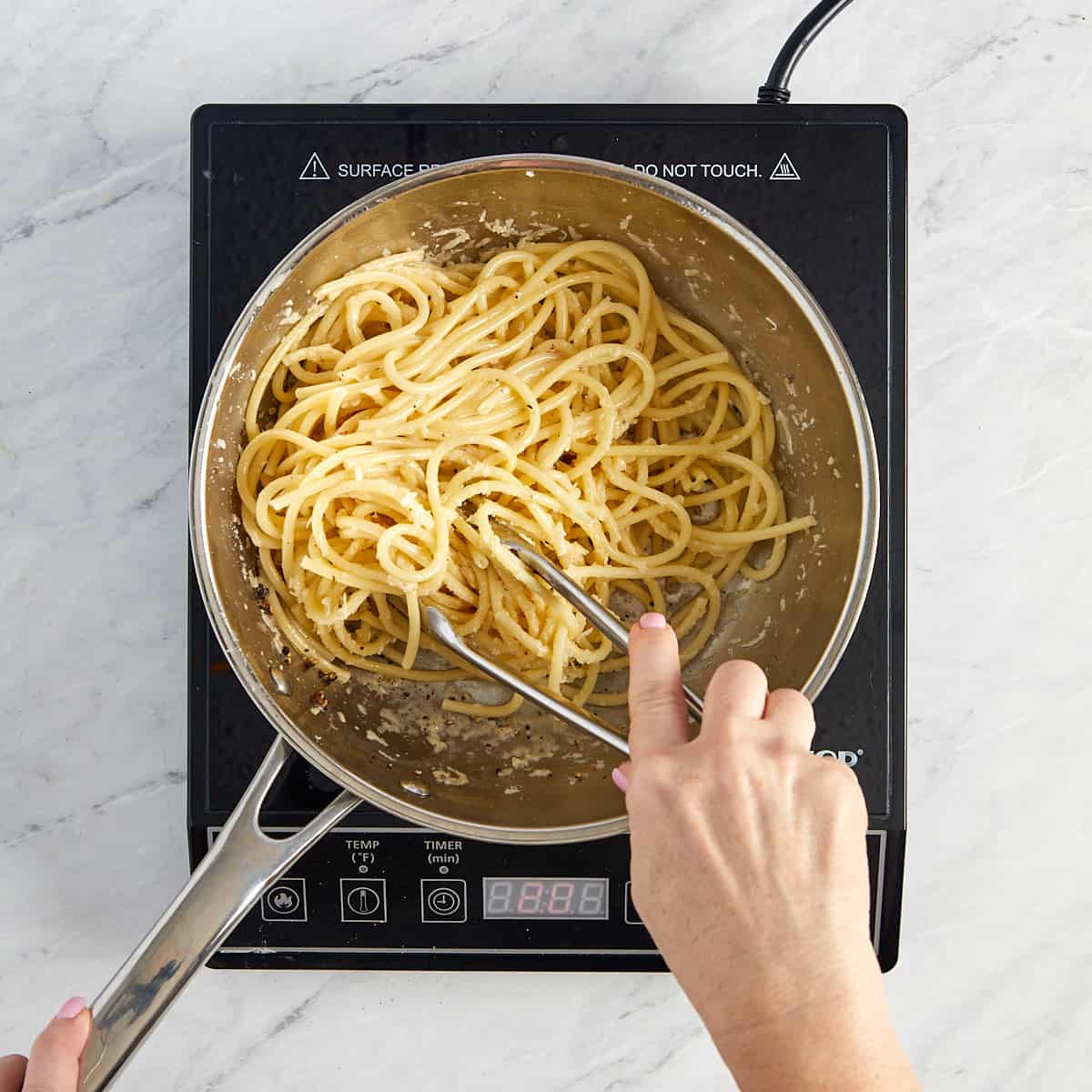
4. Plating: Serve pasta topped with a sprinkle of additional cracked black pepper and grated cheese.
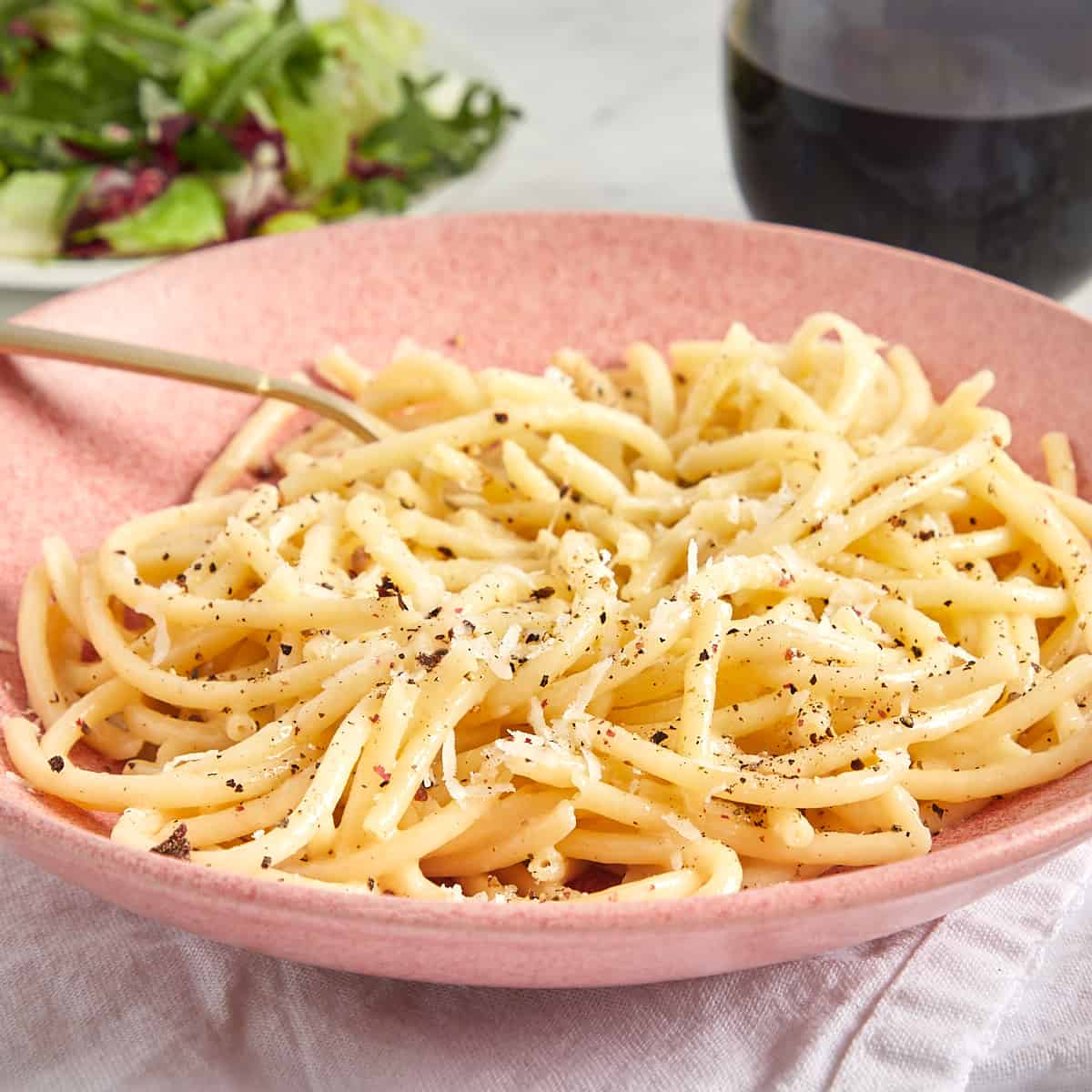
Recipe Tips and Notes
- Some of the flavors will come from the reserved pasta water so make sure it is salted.
- The starch from the reserved pasta water helps create a creamy consistency so use just enough water to cook the pasta. We recommend 1/2 quart of water for every ounce of pasta.
- Your pasta should be slightly undercooked, or just al dente since it will continue to cook with the sauce.
- The flavor of the black pepper is enhanced by the toasting process so don’t skip this step.
- Only use freshly grated cheese since pre-shredded cheese contains de-clumping additives that affect how it melts.
- Cheese should be grated as finely as possible. Larger grated cheese takes longer to melt which can create a clumpy sauce.
- There are only 5 ingredients so use the highest quality ingredients you can find.
Frequently Asked Questions
Both dishes include black pepper and cheese but Carbonara also includes egg and cured pork such as guanciale or pancetta.
Leftovers should be stored in an airtight container in the refrigerator, lasting 3-4 days. Leftovers can also be frozen in a freezer-safe container for up to 3-months.
Cacio e Pepe is best served fresh but leftovers can be reheated on the stovetop or microwave. Since the cheese sauce will thicken as it sits add a splash or two of water and stir while the pasta reheats.
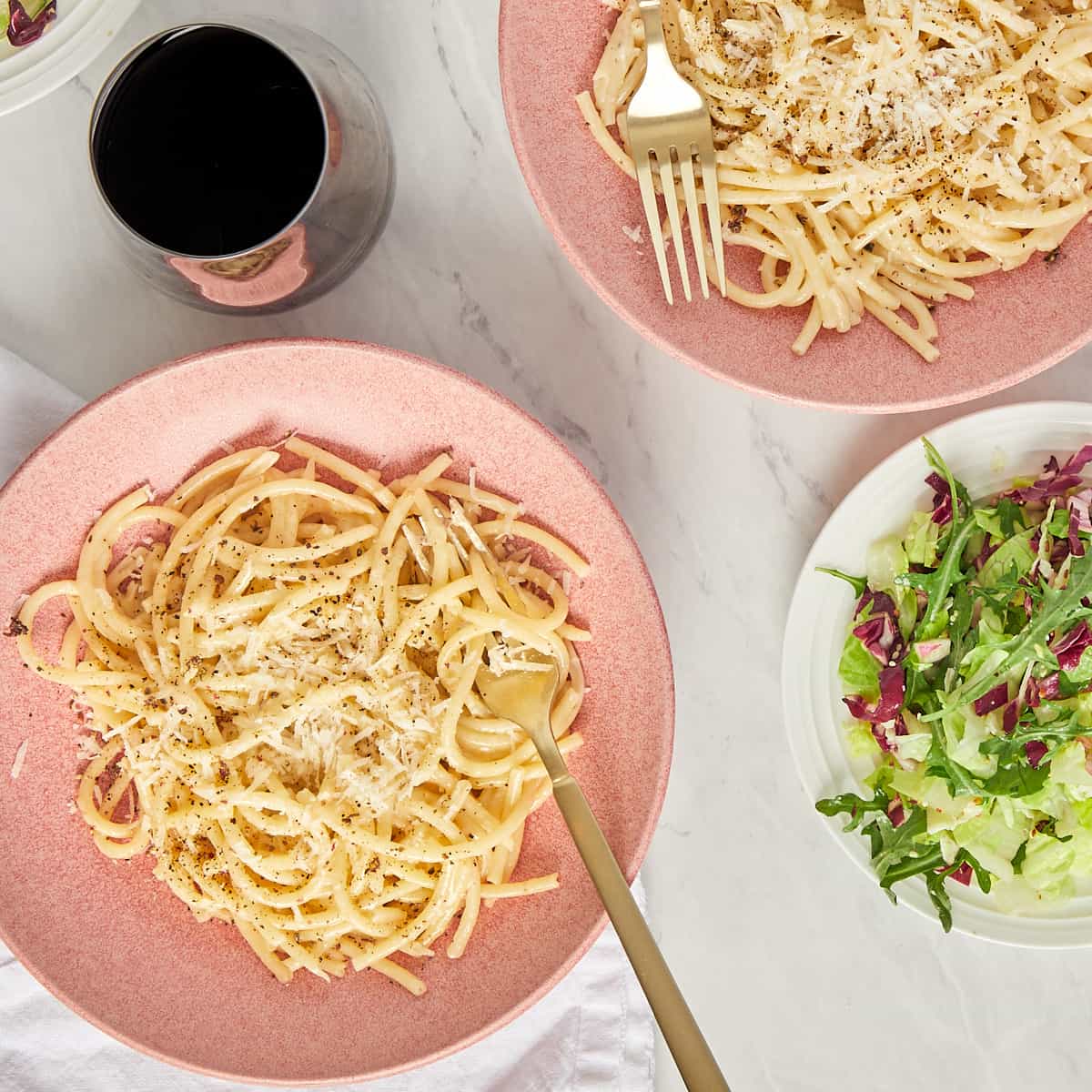
More Pasta Recipes to Try
Looking for more 30-minute Italian inspired pasta recipes? Try these other favorites:
- Pasta Carbonara with Guanciale – combines crispy guanciale with pasta then tossed in a creamy sauce of egg and Parmegiano Reggiano.
- Gnocchi with Asparagus in Lemon Cream Sauce – combines a lemon cream sauce, pillowy gnocchi, and crispy-tender asparagus then it is topped with a light dusting of beetroot powder.
- Creamy Mushroom Pasta – combines the earthy, umami-rich flavors of fresh mushrooms with a luscious, velvety sauce, all draped over perfectly cooked pasta. This comforting and flavorful pasta dish is a favorite for pasta enthusiasts and mushroom lovers.
Let’s Connect! If you make this recipe or any other recipe on Casual Epicure, please don’t forget to rate the recipe and leave a comment below. It helps others who are considering making our recipes and we love hearing about your cooking experiences. And if you snapped some shots, share them on Instagram, and be sure to tag @casual.epicure so we can feature them in our stories.
Bucatini Cacio e Pepe
This recipe may contain paid affiliate sales links. As an Amazon Associate, I earn from qualifying purchases. Please see my full disclaimer policy for details.
Equipment
- Box Grater or Food Processor
Ingredients
- 6 ounces Bucatini
- 3 tablespoons unsalted butter, cubed
- 1 teaspoon freshly cracked black pepper
- ¾ cup Parmigiano Reggiano, finely grated
- ⅓ cup Pecorino Romano, finely grated
Instructions
- Bring 3 quarts of water to a boil in a large saucepan.
- Add pasta and salt, stirring occasionally, and cook pasta for 2 minutes less than recommend cooking time on package. Strain pasta, reserving approximately 1 cup of pasta cooking water.
- Melt 2 tablespoons of butter in large skillet over medium heat. Add pepper and cook until pepper is toasted, about 1 minute.
- Add ½ cup of the reserved pasta water to skillet and bring to a simmer then add pasta and remaining butter.
- Reduce heat to low and add Parmigiano Reggiano, stirring and tossing with tongs until melted. Remove skillet from heat.
- Add Pecorino Romano, stirring and tossing until cheese melts and sauce coats the pasta. Pasta should be al dente. Note: Add more pasta water if the sauce isn't silky and you see unmelted cheese.
- Serve pasta topped with a sprinkle of additional cracked black pepper and grated cheese.

